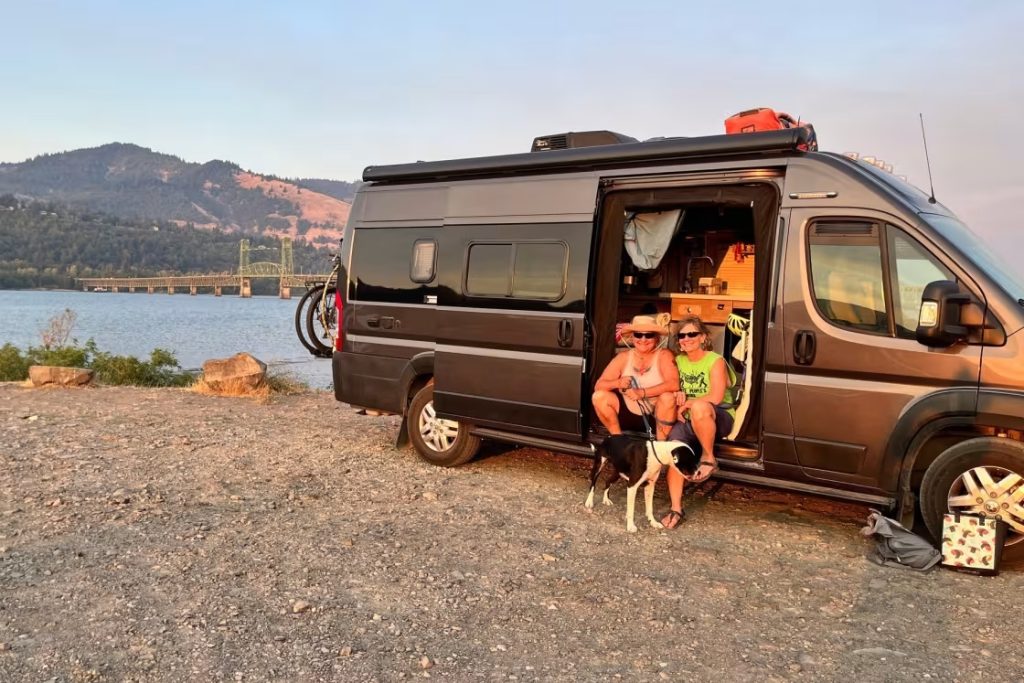Campground operators are increasingly installing Wi-Fi to meet the demands of guests who desire connectivity even in remote wilderness settings.
In the summer of 2024, what defines a happy camper is evolving beyond the traditional image of roasting s’mores and singing around a campfire. Today, alongside these timeless joys, there’s a growing demand for another modern essential: a reliable Wi-Fi connection.
The COVID-19 pandemic catalyzed a significant shift towards outdoor activities, drawing millions to explore camping and RV adventures. What began as a temporary escape has blossomed into a lasting passion for many. However, as more people embrace outdoor lifestyles, their expectations have evolved. Now, whether pitching tents or parking RVs, campers seek campsites equipped with dependable Wi-Fi—an amenity now considered by many as crucial as water, sewer, and electricity.
Tim Rout, founder of AccessParks, a San Diego-based broadband provider specializing in RV parks and campgrounds, observes this transformation firsthand. He notes that what was once a luxury for checking emails has become an expectation akin to home-quality service. Today’s campers, accustomed to seamless connectivity in their daily lives, expect nothing less when they venture into the great outdoors.

According to David Basler, chief strategy officer for the Outdoor Hospitality Industry trade group, approximately 40% of campers factor Wi-Fi availability into their camping decisions. This percentage rises significantly among younger generations, with 65% of Gen Z and millennials and 45% of Gen X campers considering it a decisive factor. This demographic shift underscores Wi-Fi’s pivotal role in shaping modern camping experiences.
Platforms like Hipcamp reflect this trend, reporting a staggering 110% year-over-year increase in searches for Wi-Fi-equipped properties. Alyssa Ravasio, Hipcamp’s founder and CEO, attributes this surge to a growing number of hosts recognizing Wi-Fi as a competitive necessity, with many choosing to include it as a standard amenity without extra charge.
Currently, Wi-Fi is available at 82% of U.S. campsites, surpassing even laundry and shower facilities in prevalence. The Dyrt, a camping information app, reveals that Wi-Fi adoption is outpacing other amenities, with nearly 16% of campsites integrating it from 2022 to 2023—faster than additions of pickleball courts, dog parks, or watercraft options.
For Catherine Stifter, 67, and her wife, who live and travel full-time in their van, reliable Wi-Fi is not just a convenience but a necessity. Stifter, a fitness instructor, relies on a stable connection to conduct her online qigong classes, illustrating how connectivity supports both work and leisure for today’s mobile lifestyle.

The pandemic accelerated an existing trend towards outdoor living, amplifying the demand for fast and reliable broadband in campgrounds. AccessParks, which saw significant growth during this period, caters to a younger, more professional demographic seeking connectivity for remote work, distance learning, and digital entertainment while camping.
Marley Behnke, owner of a campground in Grayling, Michigan, highlights how Wi-Fi enhances guest experiences beyond basic connectivity. Beyond keeping guests connected, Wi-Fi facilitates real-time activity updates, food delivery services, scavenger hunts, and interactive games, enriching the overall camping experience.
However, integrating high-speed broadband into rustic settings presents challenges. The terrain, dense vegetation, and metal RV structures can hinder signal propagation and require specialized installation methods. Costs vary widely depending on property size and service type, ranging from $50,000 to $500,000 for comprehensive installations. Yet, many campgrounds find these investments economically viable, recouping costs through nominal nightly fee increases.
The surge in camping’s popularity among both first-time and experienced campers reflects broader changes in leisure preferences. While demand remains strong across income levels, higher-income travelers increasingly dominate the camping landscape, drawn to amenities like Wi-Fi and luxury accommodations. The growing popularity of “glamping” exemplifies this trend, with forecasts suggesting sustained growth in luxury camping through 2029.
Sommer Nyte, 46, a realtor from Bellingham, Washington, epitomizes this shift towards more refined camping experiences. For Nyte and her family, Wi-Fi availability is essential alongside amenities like pools, boat rentals, and family programming. Her desire for a “posher” camping experience underscores how expectations have evolved beyond traditional camping norms.
Despite these trends, not all campsites prioritize Wi-Fi. Publicly operated campgrounds, in particular, often maintain a rustic charm by eschewing modern amenities like Wi-Fi. While approximately 60% of private campgrounds offer Wi-Fi, only 3% of public sites do, preserving a sense of wilderness and disconnection for analog campers like John Stark, a retired broadcaster from Tucson.
Stark reflects on how campgrounds have transformed from isolated refuges to extensions of our living rooms, with ubiquitous cell tower signals bridging the gap between nature and civilization. For him and others seeking solitude, the absence of public Wi-Fi at destinations like Bandelier National Monument in New Mexico preserves the sanctity of disconnecting from the digital world.
In conclusion, the evolution of camping culture reflects broader societal shifts towards digital integration and luxury experiences. While traditional camping activities endure, the demand for Wi-Fi underscores campers’ desire to stay connected and engaged with work, entertainment, and social connectivity even amidst natural settings. As campgrounds adapt to meet these expectations, the challenge lies in balancing modern conveniences with preserving the rustic allure that draws many to the great outdoors.

